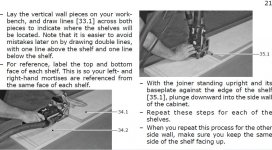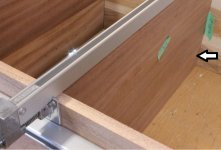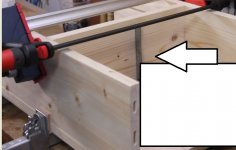rubber_ducky
Member
- Joined
- Jan 14, 2017
- Messages
- 71
Hi all,
I’m planning a dresser build that, if/when complete, will be my first carcass with a center divider. It’ll be a six drawer dresser and the divider will be used for drawer slide hardware mounting.
I watched a dresser build YT video recently where the maker used dominos for the mitered corners of the carcass, but cut a dado for the center divider. This made me wonder why he didn’t use dominos for the divider as well, which is the genesis of this question...
Does a dado’d divider offer any benefit over a dominoed (and glued) one?
Sent from my iPhone using Tapatalk
I’m planning a dresser build that, if/when complete, will be my first carcass with a center divider. It’ll be a six drawer dresser and the divider will be used for drawer slide hardware mounting.
I watched a dresser build YT video recently where the maker used dominos for the mitered corners of the carcass, but cut a dado for the center divider. This made me wonder why he didn’t use dominos for the divider as well, which is the genesis of this question...
Does a dado’d divider offer any benefit over a dominoed (and glued) one?
Sent from my iPhone using Tapatalk



